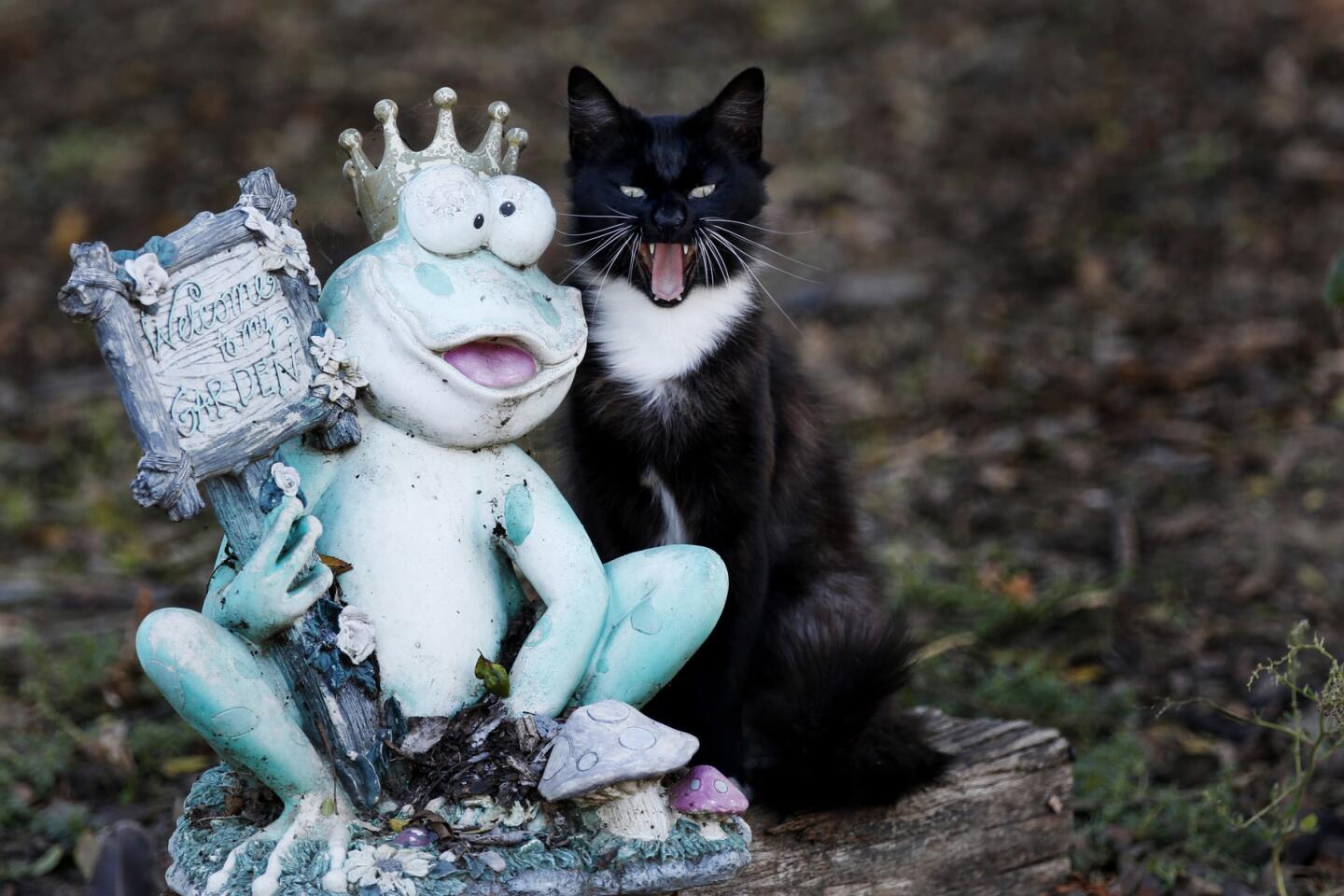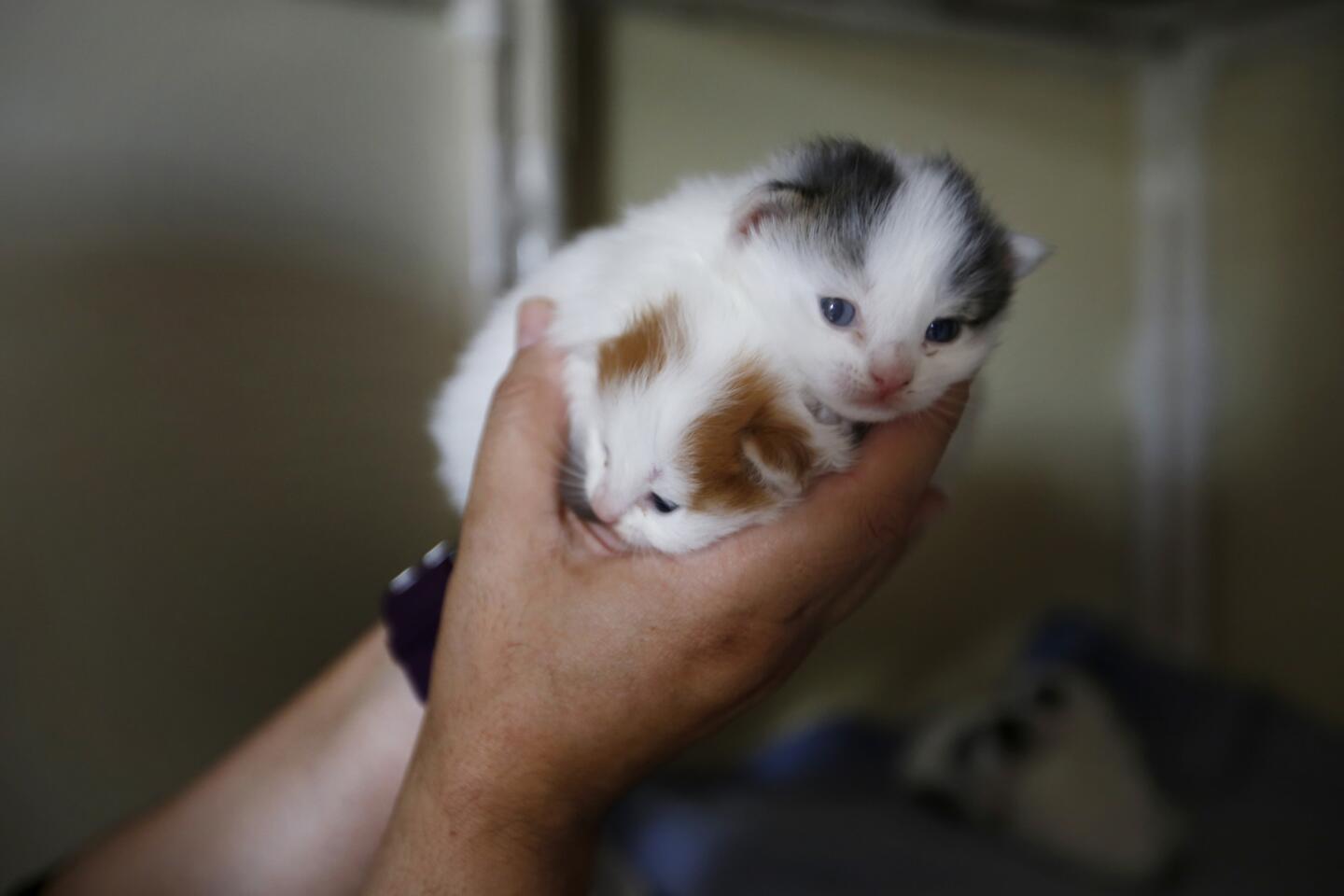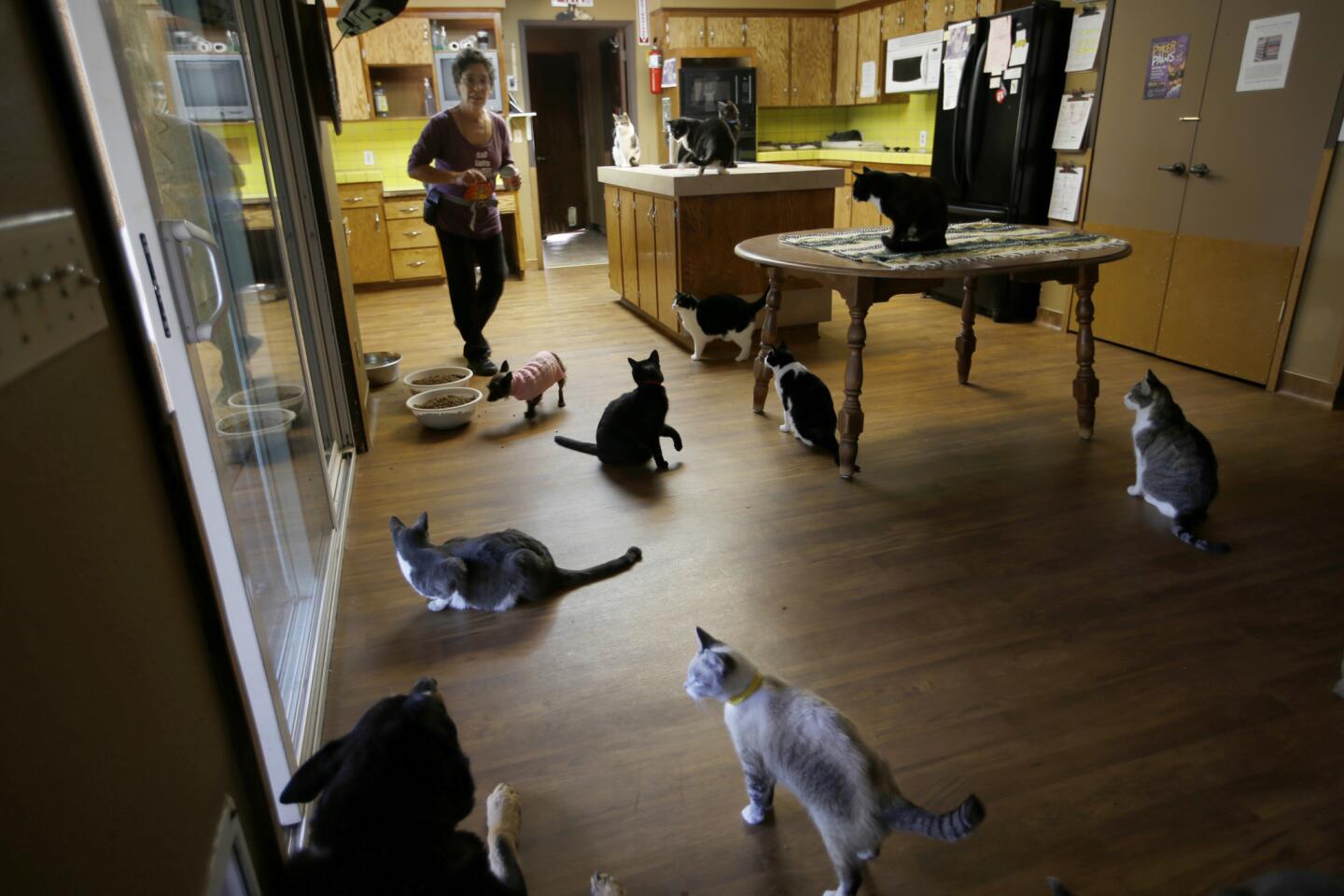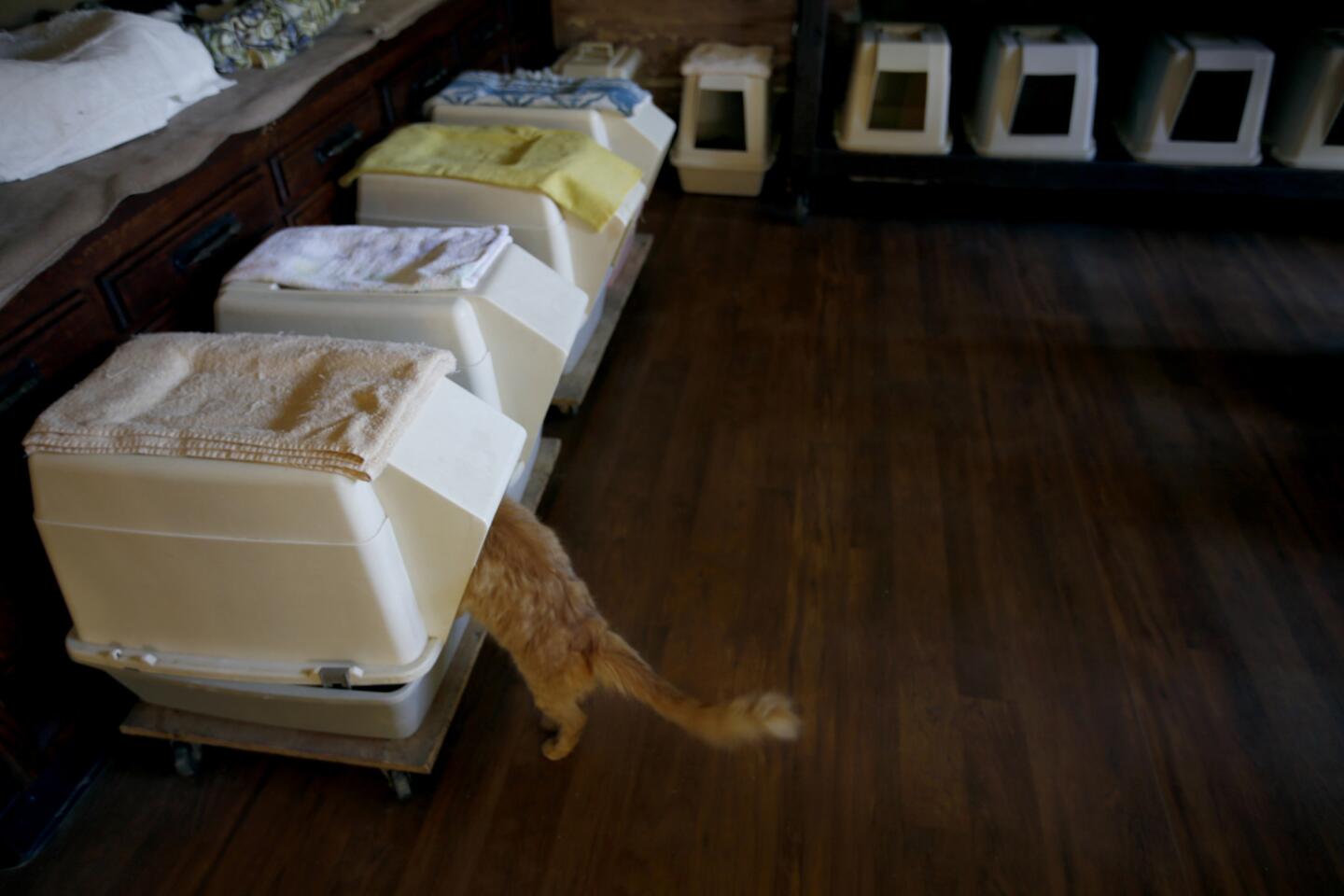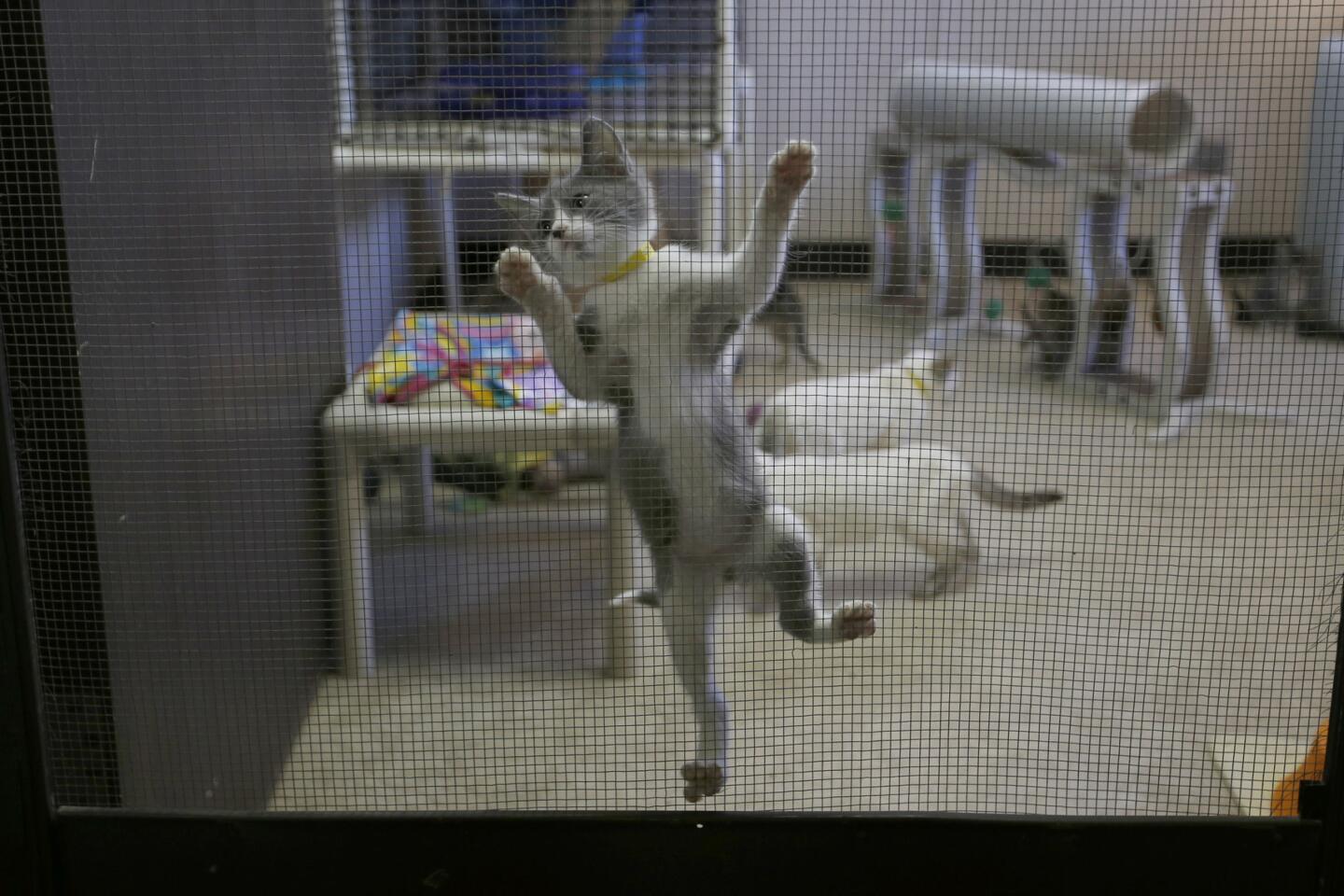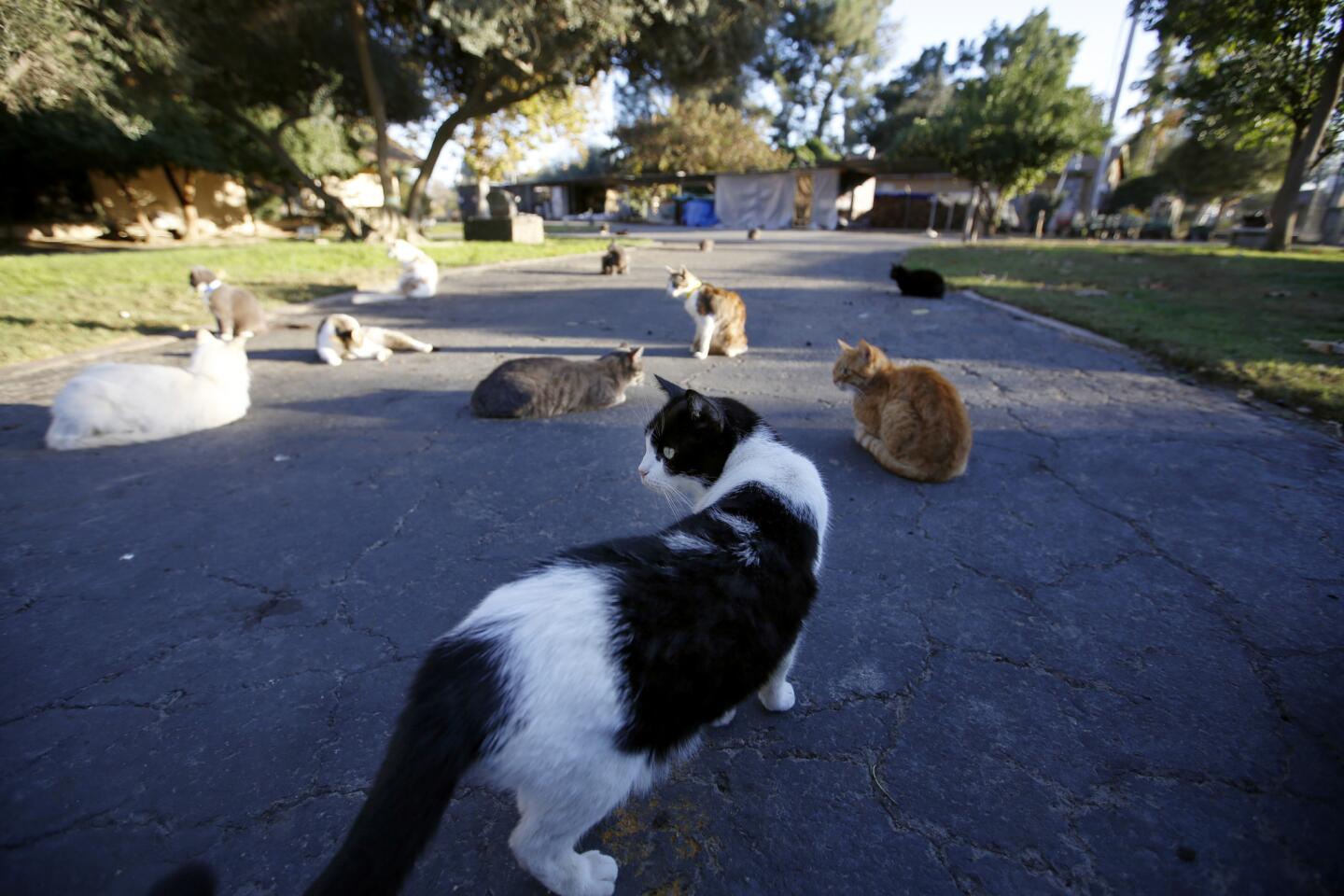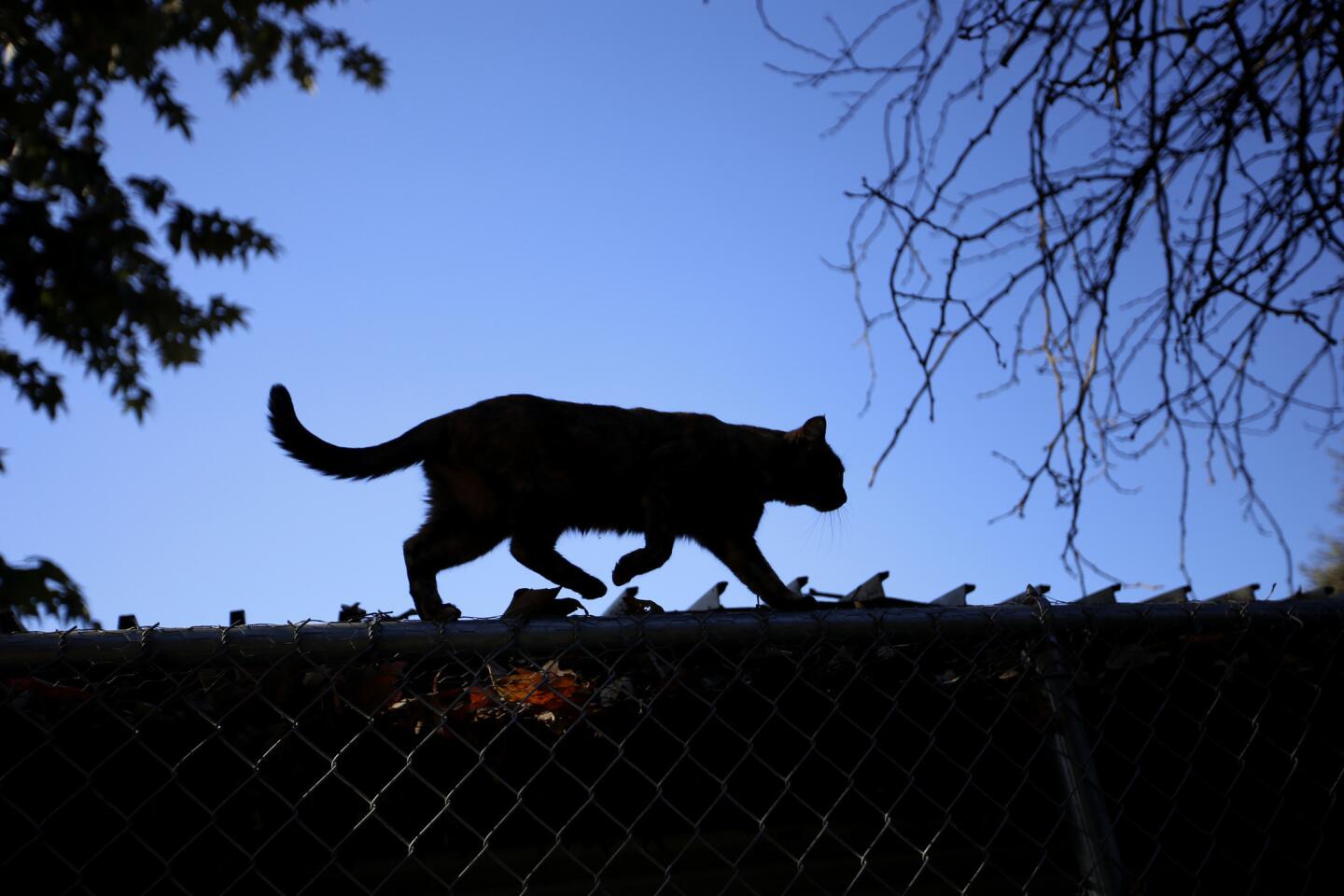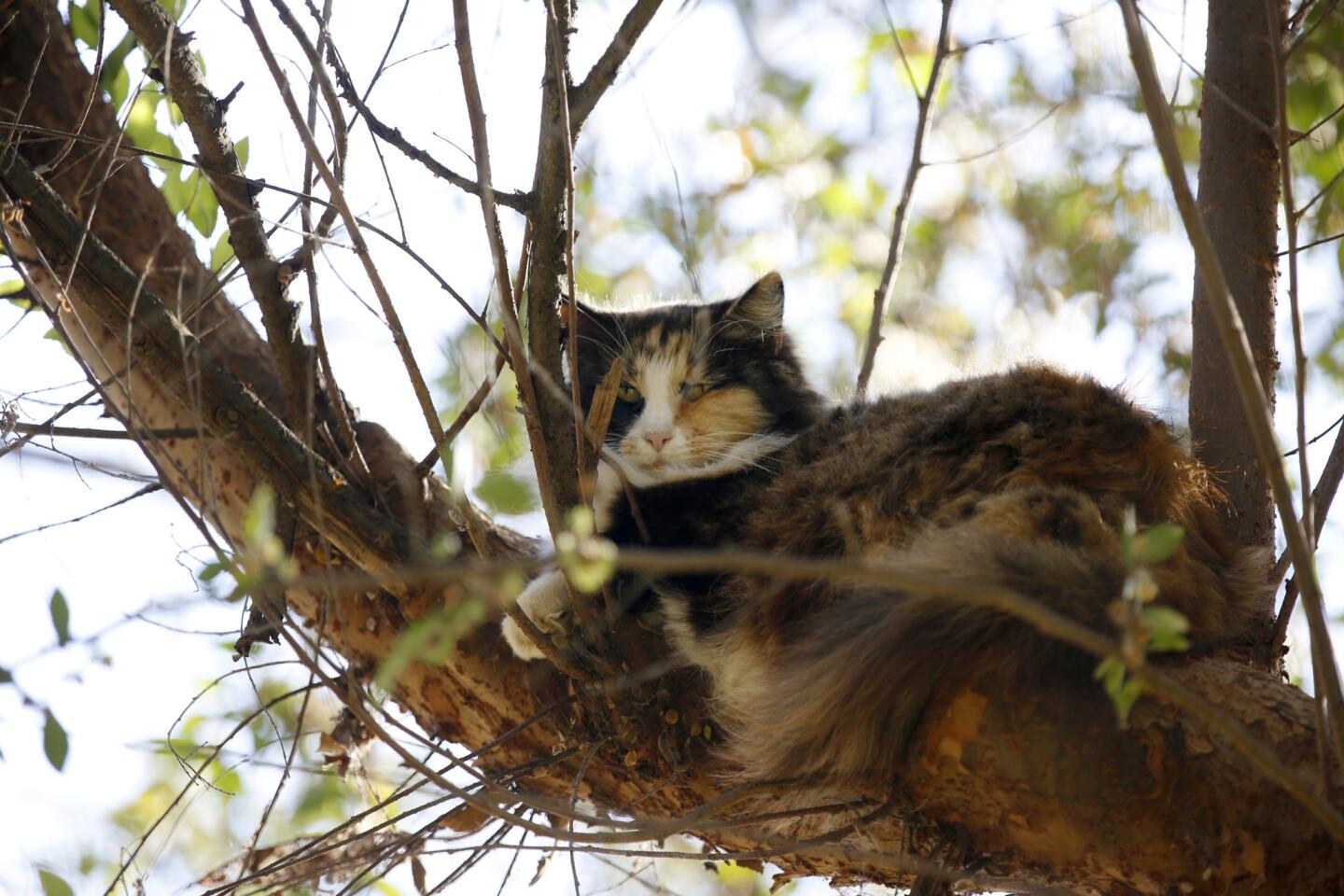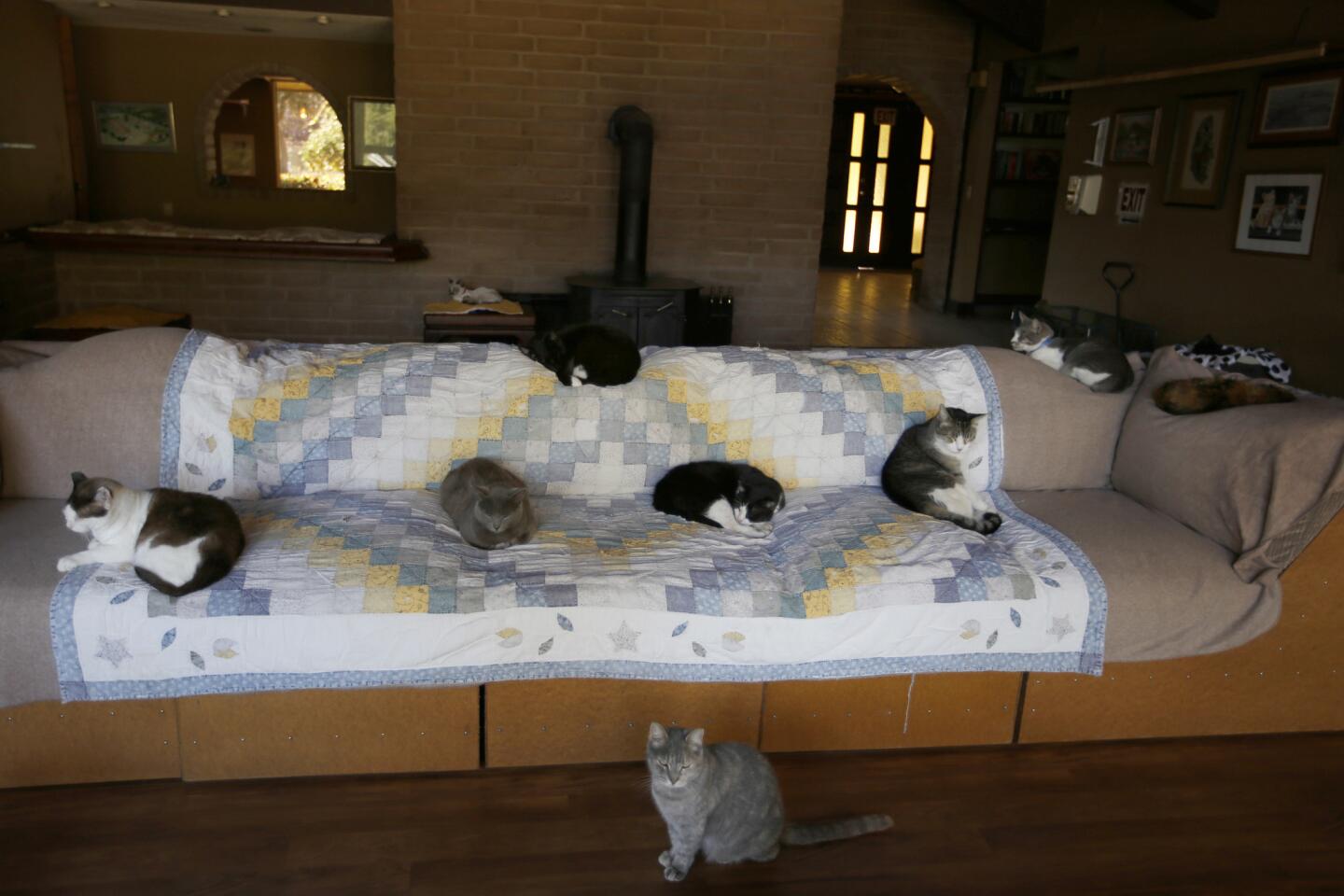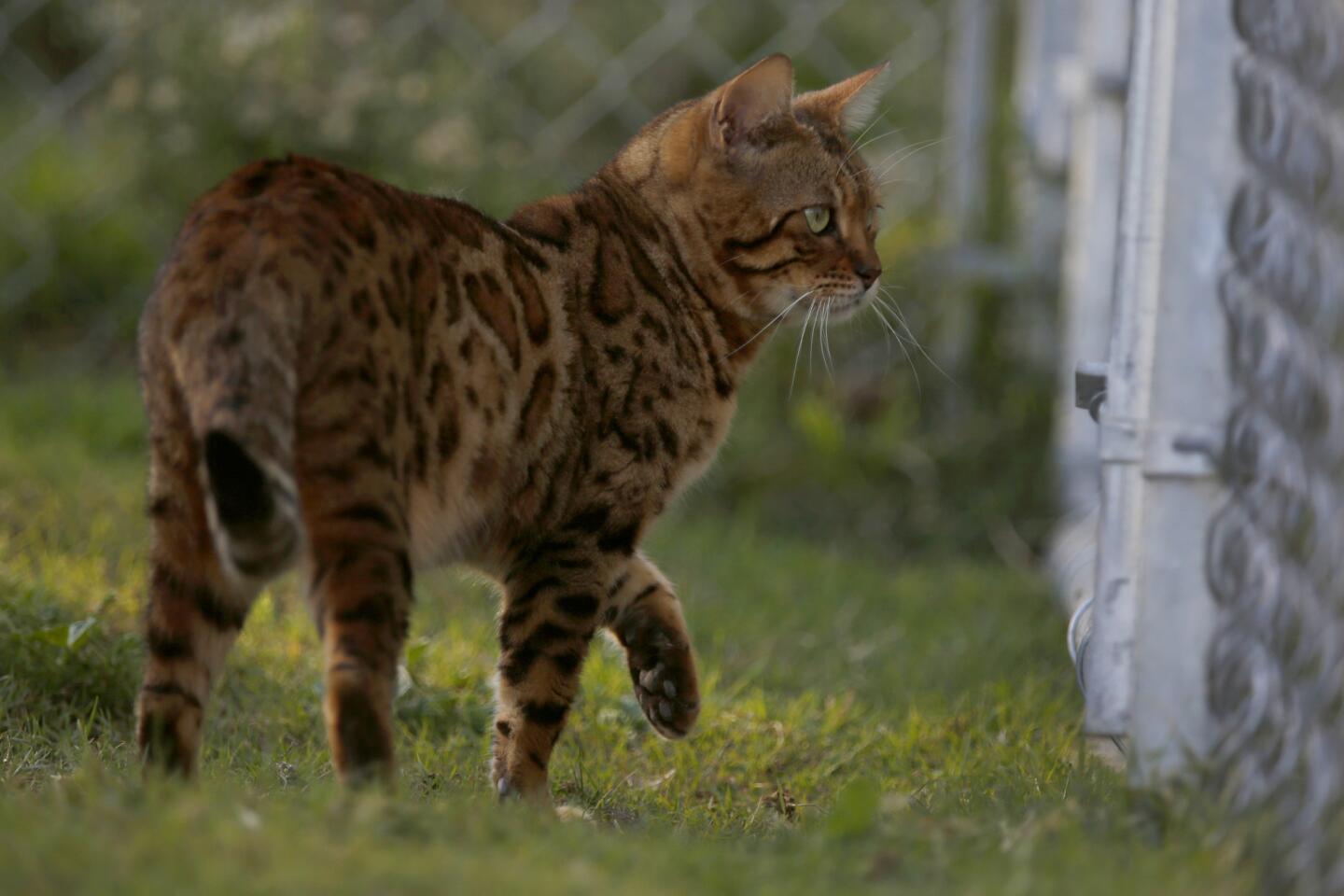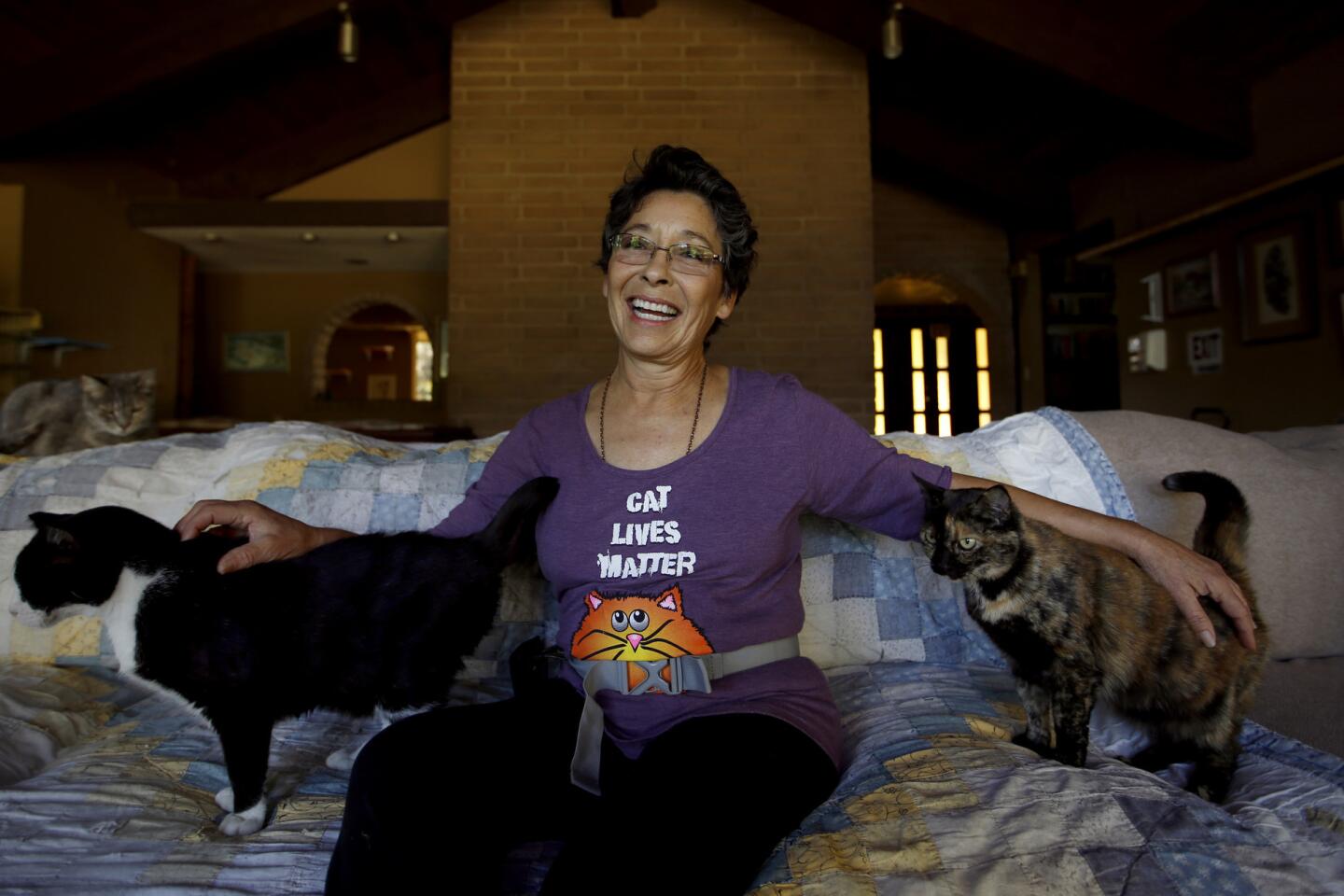Headlines got you down? Try hanging out with 700 free-range rescued cats
- Share via
Reporting from Parlier, CALIF. — So let’s see. We’re about to get a national security advisor who says it’s OK to be afraid of Muslims, an attorney general once deemed too racially insensitive to be a judge and a presidential advisor whose website has empowered white nationalists to come crawling out from under their rocks.
If I could not shake my feelings of doom, perhaps some feline therapy would help.
I needed to grab some kittens.
On Thursday, I headed north to Parlier, a speck of a place on the west side of the San Joaquin Valley southeast of Fresno. My destination: a unique, if slightly weird, 12-acre refuge, where hundreds of rescued cats and kittens roam about, free-range style, on the banks of the Kings River. They can live out their lives as free creatures or, preferably, be adopted.
The Cat House on the Kings was created nearly 25 years ago by Lynea Lattanzio, then a newly divorced woman who tried all the usual post-marriage diversions — dating, dancing, movies — but was unfulfilled.
In the spring of 1993, her father asked her to help find him two kittens, and she began looking in shelters, having no idea that there were so many unwanted cats. “I thought all kittens found homes, and I had no idea that shelters killed them. That’s when I started to rescue.”
She brought home 15 sick kittens, nursed them to health and found them homes. By the end of the year, she had rescued 96 kittens and placed all of them. But every year after that, she’d end up with a surplus. Things just sort of spiraled.
“I would rather have 700 cats than another man,” the peppery Lattanzio told me as we walked into the living room of the 4,200-square-foot, five-bedroom home she bought on the Kings River in 1983. Eight cats, spaced at perfect intervals, slept on a couch. More were curled up in beds next to a wood-burning stove. Others sprawled on tables near the picture windows.
“That’s their entertainment center,” she said, pointing to a koi pond in the entryway. A cat perched on the rim, hypnotized.
Down a hallway, we walked past three bedrooms, full of reposing cats. “This was my bedroom,” said Lattanzio, 67, a trim, attractive woman who looks a bit like Rita Moreno. “I had a 12-foot walk-in closet, a 6-foot tub and a fireplace. It’s the infirmary now.”
After a cat threw up in her ear while she was sleeping, she decided to cede the house to the cats entirely and moved to a trailer on the property.
“Instead of a view of the river,” she said, “I have a view of a rusty metal shed.”
::
Like any charitable organization founded by an eccentric, strong-willed owner, this place has had its share of issues. Lattanzio said she had a falling-out with two siblings who were on her board of directors. “They tried to fire me. Can you believe that?”
Yelp reviews are about equally divided between five-star and one-star. Some reviewers say they were turned down flat for cat adoptions with no interview. Some say they were treated rudely. Others wanted to turn in strays but were told they had to pay the Cat House $5,000 per cat.
“We take a fair number of strays from our community at no cost,” said Cat House assistant director Tammy Barker. “But if they are from outside the community, we charge.”
While I sat in the office, Barker took a call from a woman whose elderly mother, owner of five cats, had died. No one in the family wanted the pets. The caller thought she could maybe scrape up enough money for two cats. But, as Barker explained, “When people cry about $5,000, what they don’t realize is, it costs us about $100 per cat per month — for a healthy cat.” Sick cats, of course, cost much more. Most feral kittens arrive in bad shape. All cats are spayed or neutered and vaccinated.
The place goes through 1,350 pounds of dry food a week, 1,000 cans of wet food. And, of course, kitty litter. Six hundred pounds of kitty litter.
In 2015, according to the nonprofit database GuideStar, the annual budget for the shelter’s 47 employees and 700 cats was $1.2 million — more than half from grants and gifts with the rest from fees and fundraising. In 2014, the Cat House adopted out 988 cats; in 2015 that number rose to 1,237.
The need is profound. I could not verify this number, but several people I spoke to said that the Fresno area alone has 200,000 feral cats.
“Affluent areas don’t have our problem,” Lattanzio said. “Fresno is like a third-world country when it comes to how we take care of domestic pets. They throw them out, or use them to train pit bulls.”
::
I’ve never seen any place like this.
Everywhere I looked, cats. Cats sunning. Cats rolling around in the dirt. Cats nesting in trees. Cats nesting under trees. Cats moving like teensy herds across the land.
See the most-read stories this hour »
There are fenced areas and sheds for cats with chronic illnesses. There’s a curtained-off space in Lattanzio’s garage with a stove that keeps the cats toasty. She calls it “the sauna.”
There’s a separate house for senior cats, which also has a $50 guest room for visitors who can’t get enough cat during visiting hours.
There’s a dedicated 2,000-square-foot trailer compound for kittens.
And it’s all very clean. “People always think it’s going to stink, and it doesn’t. And they’re surprised,” Lattanzio said.
Kitten Quarters Supervisor Karla Cortez, who has worked here for 10 years, cradled Elliott, a tiny 12-week-old. She’d bottle-fed him and fostered him since he arrived at 1 day old, preparing him for adoption. Her sons have fallen in love with Elliott, and she plans to keep him.
“That,” Lattanzio said, “is what we call a ‘foster failure.’”
Down by the river, we walked past a heated, insulated shed for cats, who create their own colonies and come and go as they please. There was a lean-to full of shelving dotted with cat beds, which Lattanzio, given to outbursts of political incorrectness, called “tent city.” She described another area, full of lawn equipment, as “the ghetto.”
On the riverbank, a tree spread its wide branches low to the ground. “That’s our ‘Where’s Waldo’ tree,” Lattanzio said. “Kids love it.”
I saw a few cats with drippy noses and runny eyes, but nothing more alarming than your average nursery school class.
Anywhere I went, I was the object of cat love. A gray-and-black cat purred like a motorboat. A little Siamese creature crawled onto my lap. A tabby rubbed against my leg. A little one-eyed gray fellow accompanied me across a pasture.
Four hours after I arrived, my black leggings and dark sweater were covered in cat hair. Normally, I’d be annoyed. But I felt like I was on some sort of pussycat Prozac. I could not have been happier.
Get more of Robin Abcarian’s work and follow her on Twitter @AbcarianLAT
MORE BY ROBIN ABCARIAN
The kids in Berkeley are not feeling all right: rage, grief and excellent homemade signs
